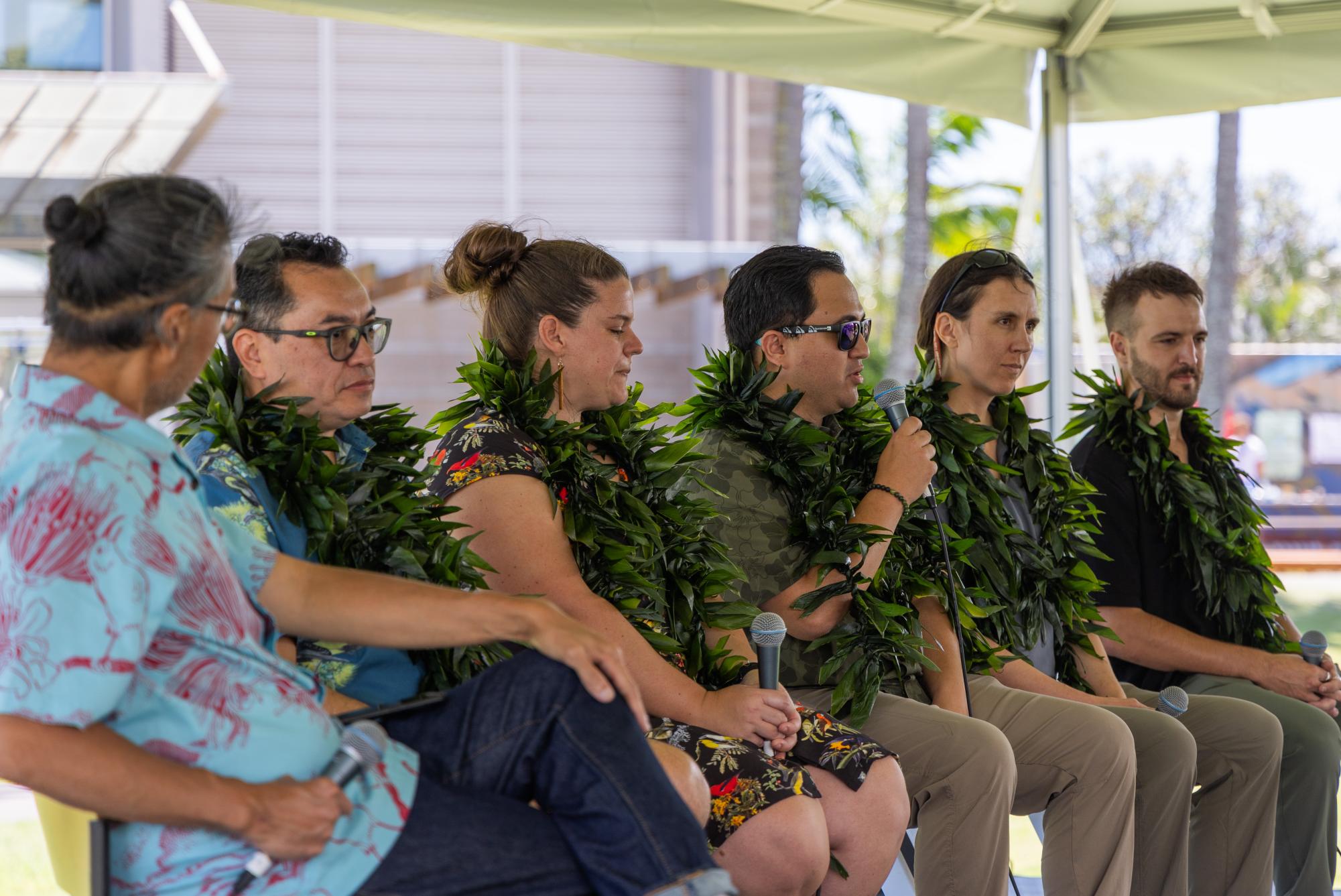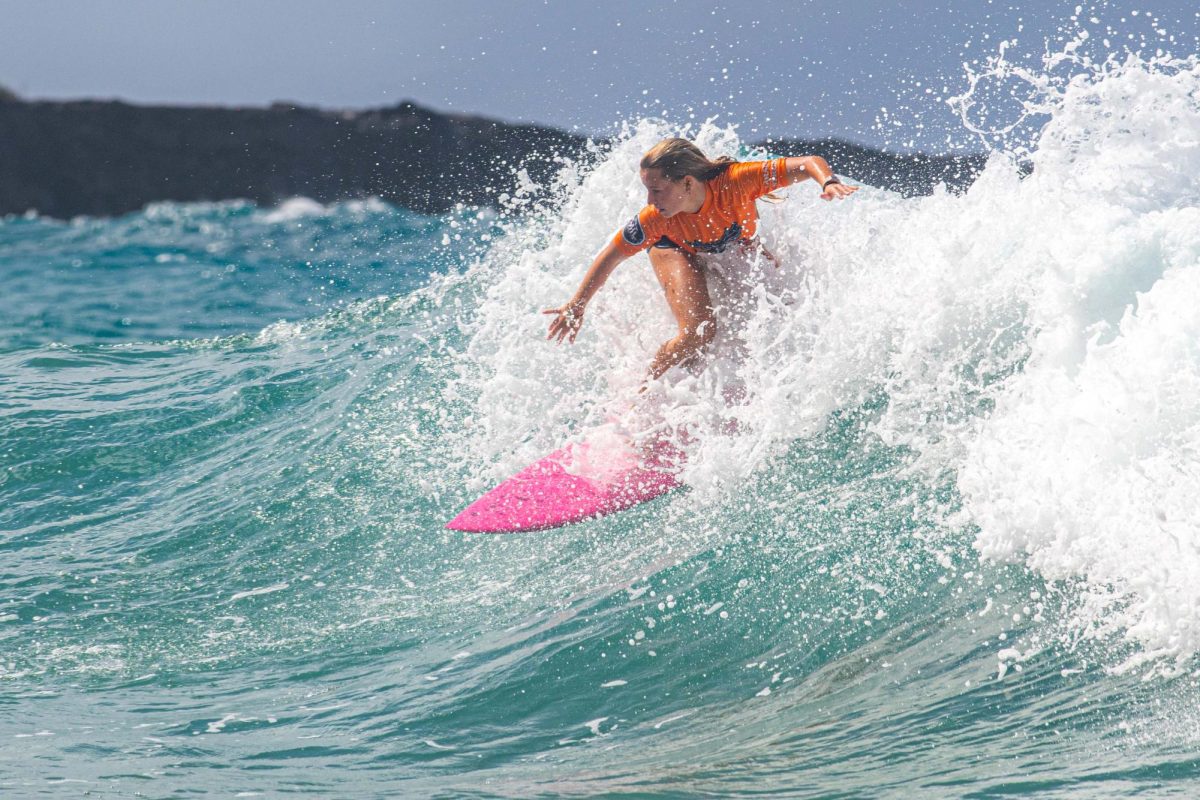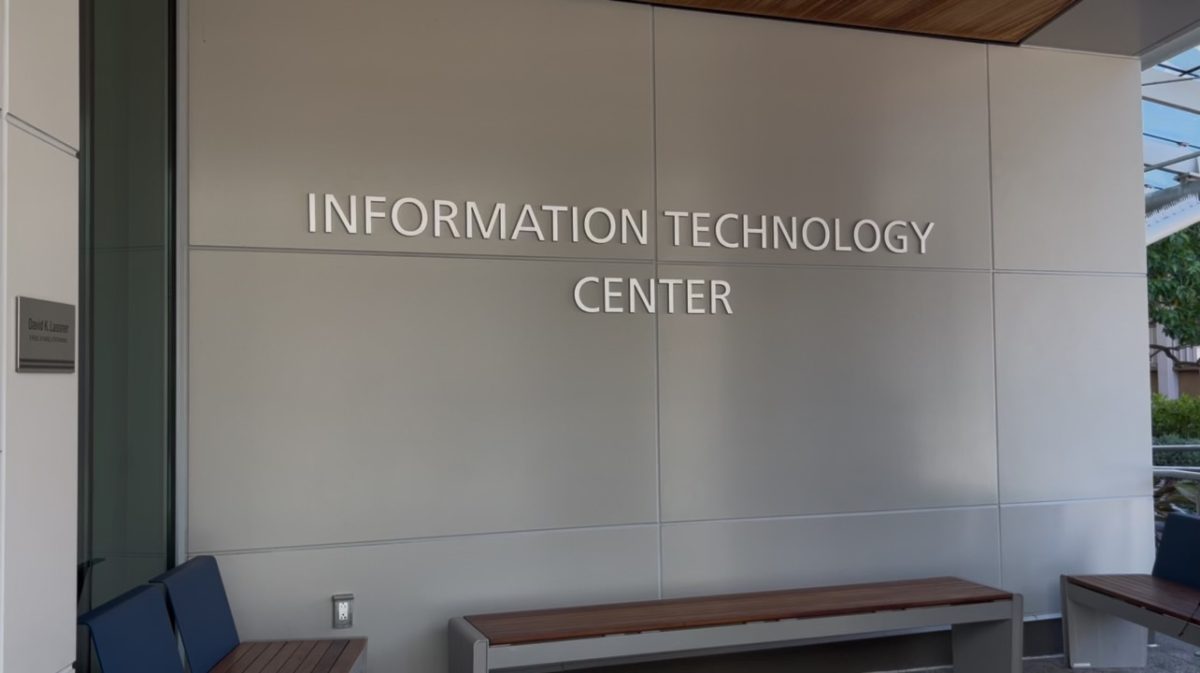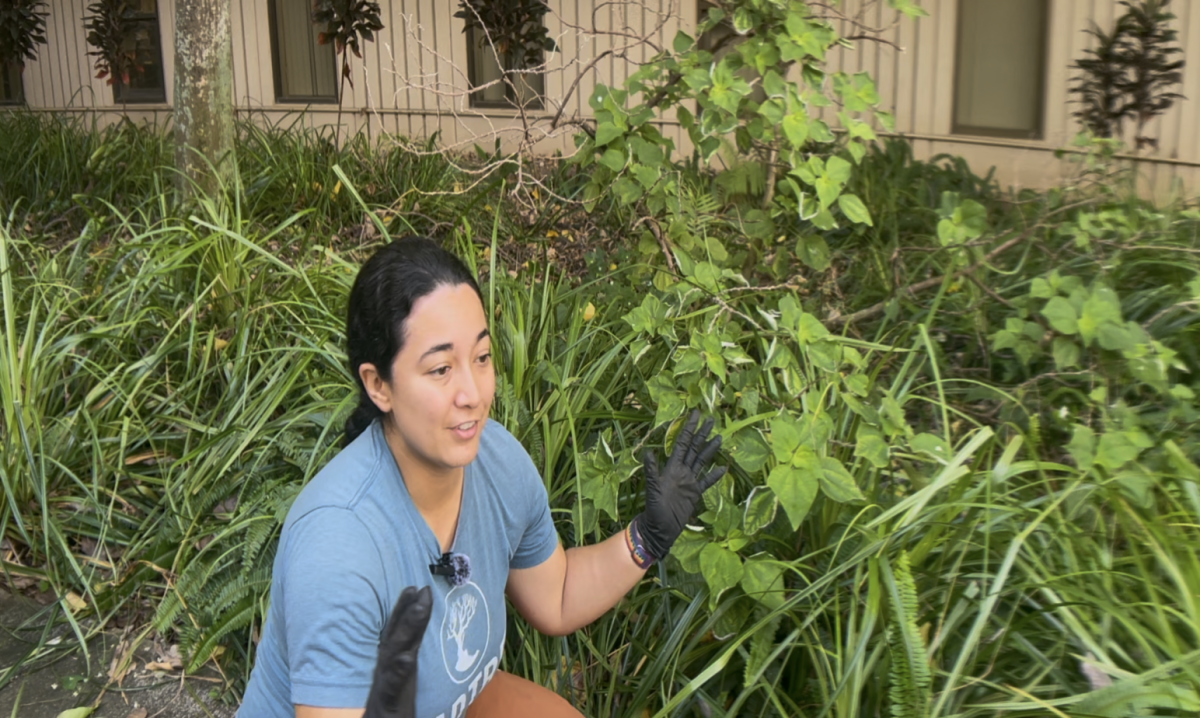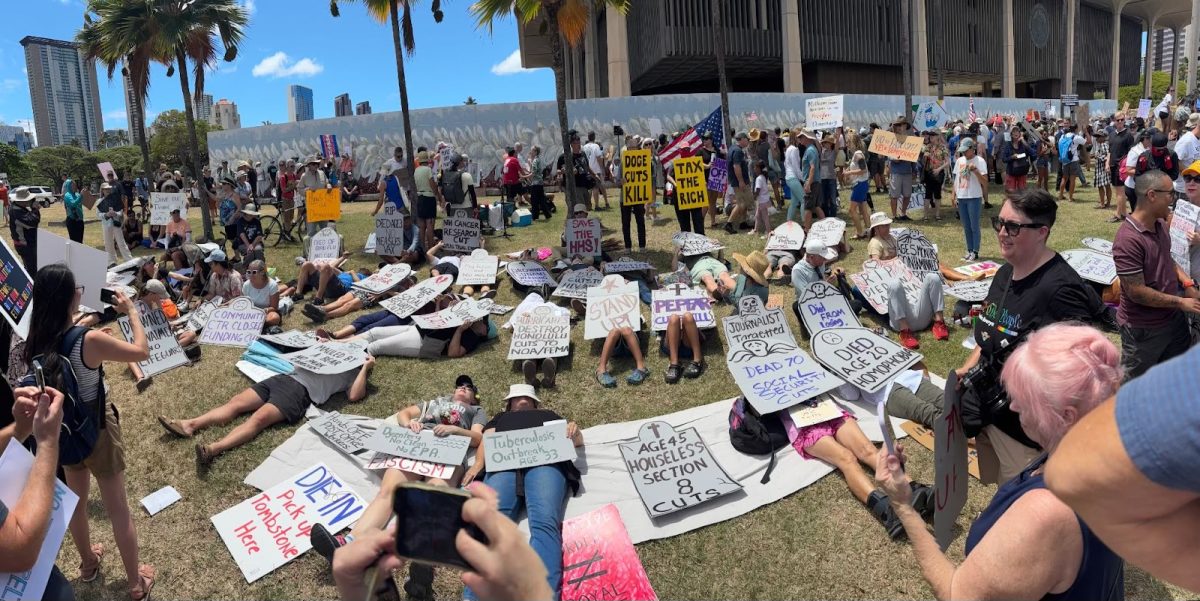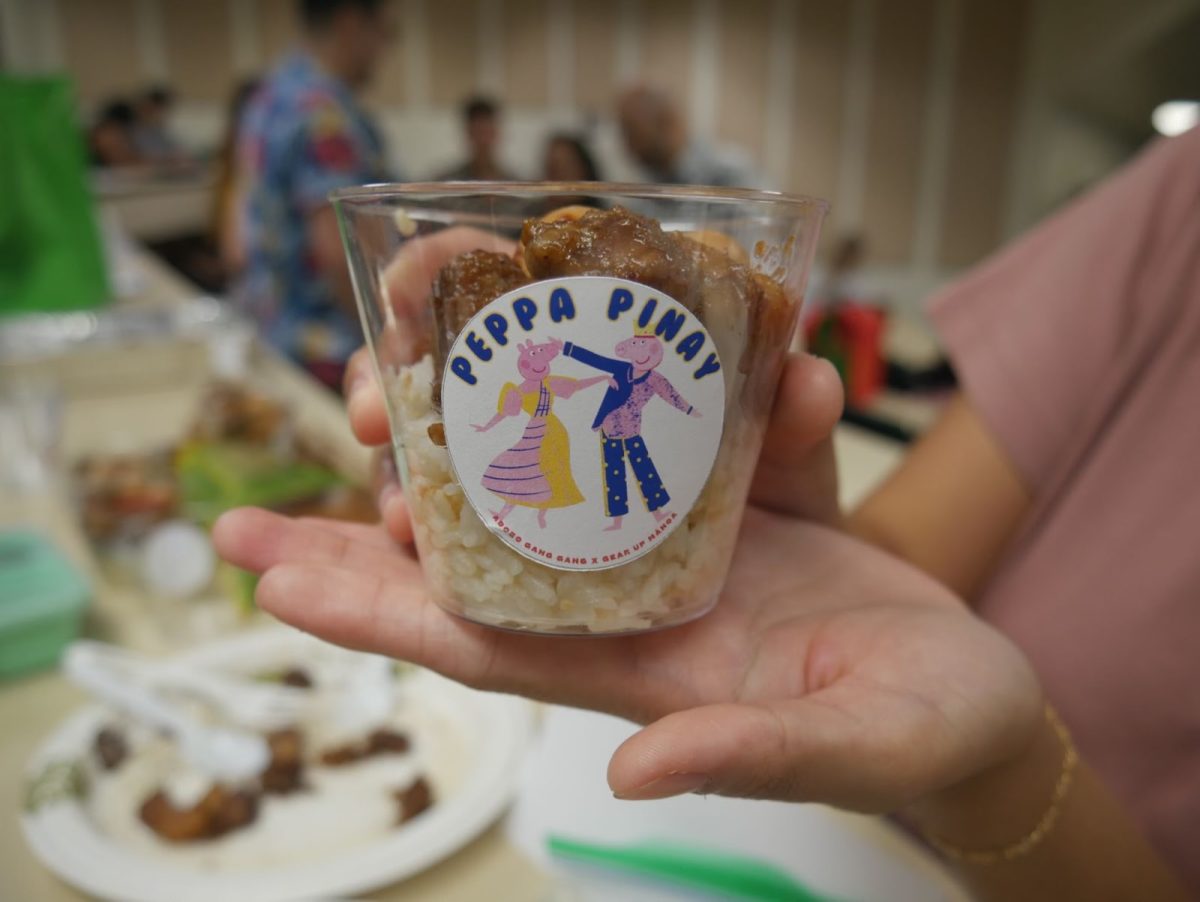Connecting Hawaiʻi’s community with the ʻāina and encouraging people to become stewards of the environment were at the forefront of the keynote panels during Bishop Museum’s annual Science & Sustainability Festival Saturday.
The festival kicked off with opening remarks by Dee Jay Mailer, the museum’s president and CEO. Following the opening ceremony, the first of two panels focusing on primary statewide environmental issues began.
Moderated by Bishop Museum community engagement specialist Ryan Sueoka, the first panel of the day, “Pio ke ahi, ʻaʻā mau ke kukui: Lessons From 2023 Maui Wildfires,” brought together specialists who addressed various sustainability issues that contribute to the spread of wildfires.
“Be kind to people, be ruthless to systems,” said panelist Clay Trauernicht, an associate specialist for the Department of Natural Resources & Environmental Management at UH Mānoa.
“We gotta understand the historical and economic process that led us to this event―this disaster,” Trauernicht added. “It’s not about ‘Oh, this thing just happened!’ There are ways in which we support and don’t support caring for people and caring for land that allowed this atrocity to happen.”
One piece of advice the panel addressed included being actively involved in political policy, especially during the state’s legislative session. Panelist Kekai Keahi, a farmer and community organizer of Moaliʻi, Lahaina, addressed the fact that around 250 bills in this legislative session involve Lahaina in some way. Keahi encouraged people to put their support towards bills that support sustainability efforts, in addition to being informed.
Nearly 80 percent “of the water resources on the West side of Maui, in Lahaina, is controlled by private prevails,” Keahi said. “That swimming pools still full … the desert parts of Lahaina is still green, the golf courses are still green, the tourists still flushing the toilet as much as they like.”
The festival’s second panel, “He aliʻi ka manu: Celebrating Makahiki o Nā Manu Nahele,” or, “A Bird is a Chief: Celebrating the Year of the Forest Birds,” placed community awareness and involvement at the forefront. Panelists discussed the declining population of native bird species in Hawai‘i and highlighted the importance of native birds in environmental protection, citing factors like seed dispersal and the mitigation of invasive insects.
“It’s really important to see the birds as stewards of the forest,” said panelist Sam Case, a post-doctoral researcher at the University of Washington studying the impacts of bird extinction. “On O‘ahu, all native frugivores have gone extinct, so that means it’s on us to make sure that those plants are planted and moved across the landscape if we want to protect them.”
Another way to protect native birds is to control populations of invasive species. Two invasive species the panelists mentioned were feral cats and mosquitoes, specifically the Southern House Mosquito. Mosquitos are transmitters of Avian Malaria, a disease that is the biggest threat to native forest birds populations.
There are eight different species of mosquitoes in Hawai’i. The Southern House Mosquito is the only one threatening native bird species according to panelist Ben Catcho, communications specialist for Birds, Not Mosquitoes.
“There’s so many opportunities in Hawai‘i to get involved and get your hands dirty and really connect with the aina,” said panelist Lindsay Nietmann, a wildlife biologist for the Department of Land and Natural Resources. The community can get involved by joining organizations that are planting native plants and creating a habitat for manu nahele to thrive.
